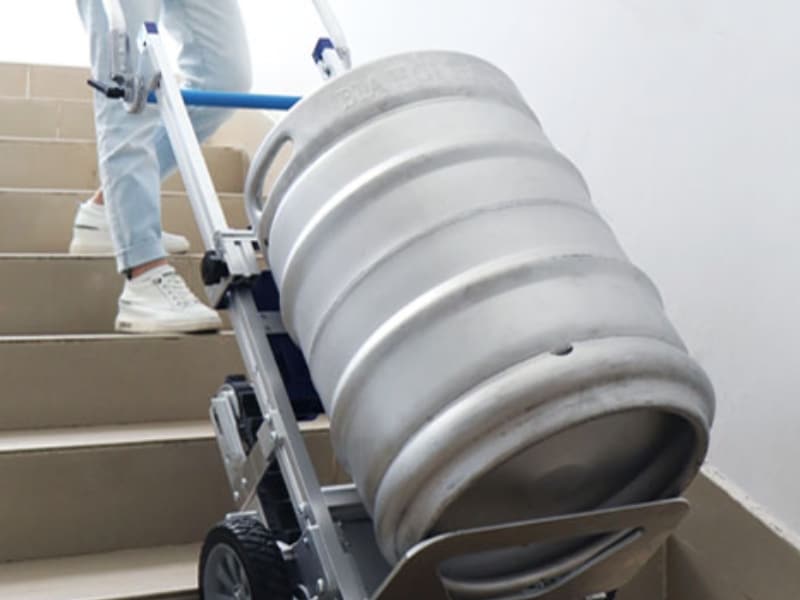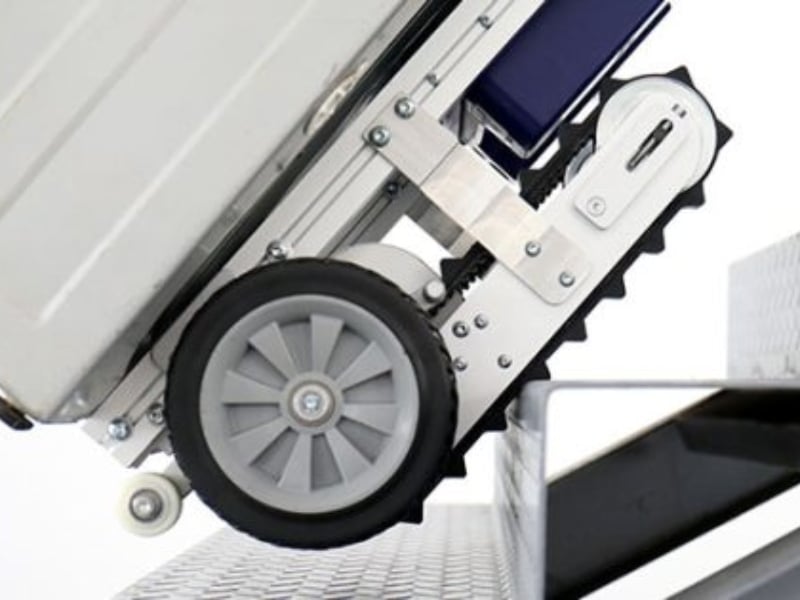Transporting goods across busy job sites and warehouses isn’t what it used to be. The physical strain of pushing heavy loads with a manual trolley is a significant issue for many workers, particularly as demands for speed and safety intensify. The motorised hand trolley has emerged as a smarter way to handle materials, offering powered assistance that dramatically reduces strain and boosts efficiency. You’re no longer stuck choosing between speed and safety. With an electric trolley, you can cut fatigue, prevent injuries, and streamline movement all at once. Whether it’s reducing time on task or lightening the load for your crew, powered trolleys are a reliable tool in modern material handling. This article examines where traditional methods fall short, identifies key features to prioritise, and explores how a motorised option can enhance safety and productivity on the job.
What common challenges do workers face with manual trolleys?
Manual trolleys seem simple, but they introduce a range of risks and frustrations. Common issues include:
- Excessive physical strain: Workers must rely on force alone, especially when navigating with full loads.
- Difficult navigation in tight zones: Many trolleys lack the turning radius needed for confined aisles.
- Poor control on slopes: Gravity can overpower braking ability, leading to injuries or dropped items.
- Extended physical effort: Over long shifts, continuous pushing drains energy and increases mistakes.
- Lack of consistency: Output varies by worker strength and technique, reducing reliability.
These pain points slow down teams and increase risk exposure. Many workplaces are now addressing these concerns by identifying the common challenges in manual material handling that impact safety and daily performance. Manual trolleys often create more problems than they prevent.
Why does overexertion remain a major risk in material handling?
Muscle fatigue and long-term damage build over time, often without warning. Watch out for:
- Irregular lifting patterns: Improper posture leads to neck, shoulder and lower back issues.
- Forceful starts and stops: The strain required to get moving or control heavy loads can damage joints.
- Misaligned equipment use: Fixed-height handles rarely suit all team members.
- Shift intensity and repetition: Dozens of trips per day add up, especially under time pressure.
- No mechanical aid: With full reliance on human strength, the risk of injury increases with each lift.
This overexertion shows up in strained faces, slower task completion, and lost work hours. In high-turnover industries, injury claims due to poor gear choices are rising fast. Too much strain costs both time and people.
How does a motorised hand trolley reduce injury and fatigue?
Electric trolleys take the physical burden out of the equation — here’s how:
- Consistent powered drive: Push a button instead of your back — motors do the work on flats and inclines.
- Adjustable pace settings: Walk at your natural pace without dragging or racing.
- Supportive braking controls: Operators can lock movement instantly for precision and safety.
- Reduced body wear: There’s no need for high force, so joints and muscles stay protected.
- All-shift performance: Stamina isn’t a limiting factor — the machine stays steady from start to end.
When you’re ready to rethink your handling strategy, it’s smart to explore how a motorised hand trolley boosts productivity and prevents physical wear before it starts. Power means less pain and more control.
What features should you look for in a motorised hand trolley?
Your workplace layout and tasks should guide your selection. Prioritise:
- Weight rating that matches peak loads: Look for units that comfortably exceed your average daily demand.
- Battery duration for your shift length: A model that runs 6–8 hours is ideal for full-day use.
- Fine-tuned speed settings: Useful for handling fragile, heavy, or awkward goods with precision.
- Maneuverability in confined areas: Choose frames that pivot and turn without needing excess clearance.
- User-centred controls: Ergonomic handles and simple toggles help every worker perform consistently.
- All-terrain adaptability: For outdoor use, larger tyres and weather-resistant frames keep you rolling.
For straightforward guidance, here’s a comparison table:
| Feature | Manual Trolley | Motorised Trolley |
| Typical Load Capacity | Up to 150kg | 250kg–350 kg+ |
| Operator Fatigue | High | Low |
| Navigation on Slopes | Manual effort only | Powered control + brakes |
| Required Training | Basic lifting skills | Simple controls, 5–10 mins |
| Battery Dependency | N/A | Yes (usually 4–8 hrs use) |
Fit-for-purpose gear keeps tasks smooth.
How can businesses improve efficiency using powered trolleys?
Electric models do more than speed things up. They:
- Allow broader task sharing: Anyone can move heavy gear, not just the strongest team members.
- Reduce handling errors: Precision controls enhance the placement of loads.
- Lower injury rates: Safer tools mean fewer compensation claims and delays.
- Streamline workflows: One person can do a two-person job with ease and safety.
- Protect the load itself: Smooth movement minimises bumps and drops, reducing product loss.
If you’re navigating growing workloads and want to reduce bottlenecks, learn how you can improve efficiency using powered trolleys and work smarter, not harder. More innovative tools mean more intelligent workflows.
Is electric mobility reshaping industrial transport equipment?
Yes — powered tools are becoming the new normal. Industry trends show:
- Increased compliance needs: Trolleys with safety tech meet more OH&S benchmarks.
- Eco-conscious upgrades: Rechargeable units reduce emissions and lower maintenance costs.
- Support for lean staffing: Trolleys reduce the need for multiple handlers per load.
- Quieter, more flexible models: Great for schools, clinics, and after-hours environments.
- Rapid tech evolution: Smaller batteries now power heavier loads with ease.
To stay aligned with best practices, many teams now consult resources on the safe use of trolleys in the workplace and refine their approach. Mobility is more intelligent, safer, and here to stay.
Are motorised hand trolleys adaptable to different work environments?
Versatility is one of their biggest strengths. Benefits include:
- Weather-tough materials: Powder-coated frames resist rust and moisture damage outdoors.
- Non-marking tyres: Indoor-friendly wheels that grip well without scuffing floors.
- Modular attachments: Switch between platforms, cages, or straps for a variety of tasks.
- Foldable or stackable builds: Save space in vans, closets or storage bays.
- Noise-rated for quiet zones: Some models operate at or below 60 dB, making them ideal for sensitive sites.
From office deliveries to rugged sites, teams are moving past outdated methods and overcoming transport obstacles using smarter gear. Adaptable tools suit every environment.
Final thoughts
If you’re still relying on manual trolleys, it might be time for a rethink. Motorised units protect staff, boost uptime and pay for themselves in productivity. Making the switch doesn’t require a complete overhaul — you can start with one or two units in high-use areas and assess the impact from there. Most workplaces find the transition easier than expected, with immediate gains in both safety and efficiency. For guidance tailored to your worksite, you can speak to the team at Stair Climbers about your handling needs.

